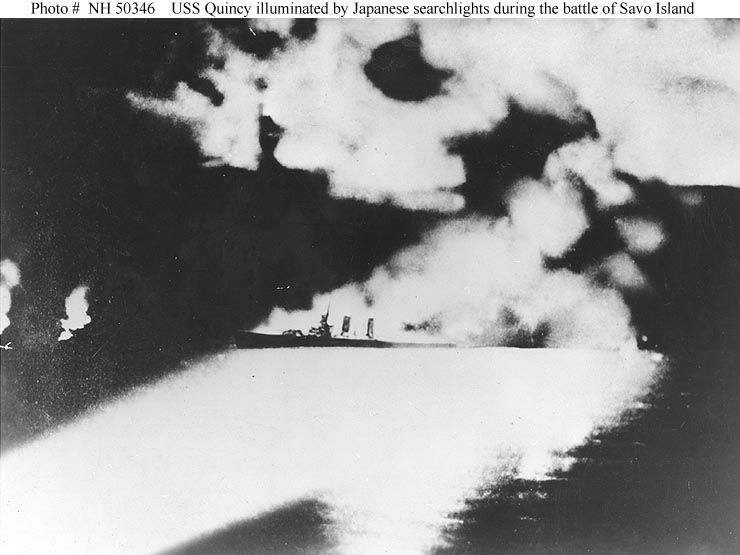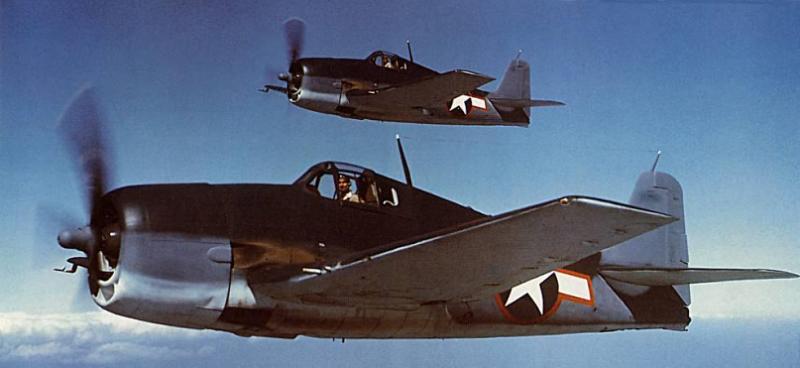
The newest Update and Clarifications (formerly called Rules Clarifications) came out this month. We have have made them available at https://wargamingforums.com/downloads/War_at_Sea_Clarifications.pdf (the pdf requires the FREE Adobe Acrobat Reader to view the file. You can get Acrobat Reader for FREE HERE).
The new clarifications combines the April 2007 and July 2007 updates, eliminating the need to have the old ones, and introduce several major and minor updates.
The new clarifications introduces some minor changes, which I’ll cover below, along with roughly 3 major updates that every War at Sea gamer has to pay close attention to. The major updates are actually new rules that were supposed to come out with Task Force but are now available giving us plenty of time to master them before Flank Speed releases in June 2009.
The minor updates begin on the first page. In the Air Mission Phase section there are six bullets (the last two on page two). The new change occurs in bullet four where it says that aircraft not assigned to other missions can be assigned to sectors containing carriers, but not specifically assigned to a carrier.
“Aircraft cannot remain on or be assigned to Carriers (although they can be assigned to a sector containing a Carrier).”
The minor clarifications continue on page two in the Air Attack Phase section. There is a new first paragraph on the section, which clarifies that aircraft can only attack once each turn. I have not encountered aircraft attacking more than once in any game I’ve played or read about. One would imagine that common sense applies but it seems that this had to be spelled out for some players. Mr. Baker has been very good responding to criticism and suggestions from players. If sufficient reports were submitted on this issue being abused then he would insist that a clarification like this make its way into the next update. I’m simply ashamed that some players took advantage of this issue when it has been clear that planes only get one attack. They either strafe or they escort granting them a single air defense attack.
Page two also sees the third minor change in the Stacking sub section of the Movement and Position Section. There is a new first paragraph to Stacking, which clarifies that units can move through sectors that are stacked to the limit but cannot remain unless there is space for it. This is a straightforward but useful clarification that patches a slightly ambiguous rule.
The major updates begin on the bottom of page four with the introduction of a new Convoy Scenario. I’ve read through this scenario, which consists of three sentences, and also have read online battle reports using this scenario. Based on this I strongly urge players to NOT use this scenario. It is too easy for the attacker to win. The defending player has a much harder time. I know some gamers who are working hard to craft a better Convoy Scenario. When they arrive at some major developments I’ll share their progress.
Another addition is that of a Major Engagement Scenario (shown on page five). The rulebook covers Major Engagement Scenarios on page 35 but the clarifications document features some key changes. First, in a 500-point game the aircraft stacking limit shoots up to 5 friendly aircraft in the same sector. Please note that this does not cover land airbases, which can hold 13 friendly aircraft at 500 points. Second, the required points to win a Major Engagement Scenario have increased. 200-point games now require 300 points to win. 300-point games require 450 points to win and 500-point games require 750 points to win. You will note that for 200 and 300 point games the total to win increased by 50 points. The total to win a 500-point game increased by 150 points. Additionally, the value of objective markers has increased to 100 points each in a 200-point game, 150 points each in a 300-point game, and 250 points each in a 500-point game. I know this is tough to read in a paragraph so please use the list below accessibility.
Objective Marker Points in Major Engagement Scenario
200 Point Game
- Was 75 pts, Now 100 pts each
300 Point Game
- Was 100 pts, Now 150 pts each
500 Point Game
- Was 200 pts, Now 250 pts each
They also addressed the issue of Historical Fleet Restrictions (page 5), which is originally covered on page 36 of the rulebook. The reason for the change is that Task Force included so-called sister ships. These are ships of the same class as vessels in the Base Set but depicting different ships in that class. For example the Base Set featured the Bismarck and Task Force introduced the Tirpitz. They are the same class of ship but are different vessels. This necessitated an update to the Historical Fleet Restrictions. Wizards did a great job showing the new limits in an easy to use chart.
When in doubt use this official rule of thumb. You can field two ships from the Bismarck class. They can be 2 Bismarcks, 2 Tirpitz, or 1 Bismarck and 1 Tirpitz. You cannot field more than that and the same goes for the other classes such as the Iowa and Missouri, the Zara, the Tone, the Illustrious and so forth. Please refer to page five of the new clarifications document for any questions. It replaces the Historical Fleet Restrictions on page 36 of the rulebook.
 The meat and potatoes of the February 2009 Updates and Clarifications document starts on page six with the Darkness (aka Nightfighting) rules. This is the official Nightfighting rules that we have been waiting and wanting for a long time. It introduces a big change to how the game is played and as such we strongly recommend that all players read page six and seven, where the rule continues, a couple times. It is also recommended that players work out how to handle the new rules with their gaming group/opponents.
The meat and potatoes of the February 2009 Updates and Clarifications document starts on page six with the Darkness (aka Nightfighting) rules. This is the official Nightfighting rules that we have been waiting and wanting for a long time. It introduces a big change to how the game is played and as such we strongly recommend that all players read page six and seven, where the rule continues, a couple times. It is also recommended that players work out how to handle the new rules with their gaming group/opponents.
We believe the Darkness rules to be straightforward and although it is stated “The following rules for fighting in conditions of darkness are presented for use in constructing your own scenarios. They aren’t used in the Standard, Convoy, or Major Engagement scenarios” we see no reason to exclude them from use in those scenarios. If you’re playing a Standard scenario (regular game) and your opponent is cool with it then go ahead and use these rules. We also suggest that gaming groups house rule them as standardized rules. Get comfortable with these people because they’re here to stay in one form or another. We really enjoy the Twilight rules at the bottom of the page in the Darkness Rules in the Standard, Convoy, or Major Engagement Scenarios section. There’s something realistic about the game starting in one set of conditions that transitions to another. Night to day, day to night…it will be a blast to play and will make for a great battle report.
Speaking of changing conditions we come to the other major update. This is the inclusion of Weather rules (on page seven). I’ve seen this kicked around online and I generally like what I see. My gaming group and I have been working on our own Squall rules and I still like ours better than the ones presented in the new file. But, I like some of the options in the Weather rules such as the ability to place multiple Squall markers and rules for placing weather. I like the Changing Weather rule so much that I adopted it a month ago into the Squall rules my group is working on.
There is a change in the Special Abilities section with the addition of Pinpointer/Shadowing and Sub Hunter. Their inclusion is really a clarification made official on the Wizard message boards from long ago that addressed these special abilities. When aborted an aircraft cannot use its Pinpointer and/or Shadowing special ability. Additionally a unit with the Sub Hunter special ability cannot violate stacking limits.
The last change is on the final page in the section Card Errata. This otherwise minor update is important because it concerns some items in the Task Force FAQ. The errata for the U-66, USS Hoel, and USS John C. Butler is old news covered in the Task Force FAQ from 7/24/08. In fact, I believe that FAQ does a better job of covering the Hoel/Butler SA situation along with the general usage of smoke screens. I feel so strongly on this that I recommend players use that document instead when it comes to the errata for the Hoel and Butler. They say the same thing but it says it in a more understandable way.
 The real news here is the change of the F6F Hellcat’s Vital Armor. It has been dropped to 9. The inclusion of Nightfighting rules should greatly help the Imperial Japanese Navy, which historically performed quite well at night. This reduction of the Hellcat’s Vital Armor will hopefully breath new life into Axis aircraft resulting in a more balanced game. There has always been a significant American bias in the game no matter how much the designers refuse to admit that. But, their willingness to adjust the stats of a unit show they have listened to player reactions.
The real news here is the change of the F6F Hellcat’s Vital Armor. It has been dropped to 9. The inclusion of Nightfighting rules should greatly help the Imperial Japanese Navy, which historically performed quite well at night. This reduction of the Hellcat’s Vital Armor will hopefully breath new life into Axis aircraft resulting in a more balanced game. There has always been a significant American bias in the game no matter how much the designers refuse to admit that. But, their willingness to adjust the stats of a unit show they have listened to player reactions.
Overall I am happy with the new Updates and Clarifications document. It is double the length of its predecessor while maintaining good usability and ease in understanding the text. Most of the changes are substantiative and the inclusion of Nightfighting (they call it Darkness) and Weather are delightful. Many players, myself included, expected these rules to come out with Task Force, which is what Wizards promised. I guess it is better late than never. I can’t wait to start using these new rules, all of them, in my games.
Be sure to read, print out, and share the Rules Clarifications. In case you forgot the URL we have made the clarifications available at https://wargamingforums.com/downloads/War_at_Sea_Clarifications.pdf (the pdf requires the FREE Adobe Acrobat Reader to view the file. You can get Acrobat Reader for FREE HERE).



